- Established 1982 -HOME: www.hiltonpond.org
THIS WEEK at HILTON POND Subscribe for free to our award-winning nature newsletter (Back to Preceding Week; on to Next Week) |
2018 BIRD BANDING SUMMARY: --THUMBNAIL RESULTS-- At Hilton Pond Center we arbitrarily established 2,000 as a realistic round-number goal for how many birds we'd like to band each calendar year. We fell far short in 2018, in large part because of uncooperative weather and after winter finches didn't arrive in expected big numbers this past fall. We ended the year with 1,245 bandings--well below our desired minimum and barely two-thirds of our 37-year average of 1,841 individuals banded annually.
All text, maps, charts & photos © Hilton Pond Center The just-ended year's biggest numbers came from three species (above, left to right): American Goldfinch (305, but only 76 banded in fall or early winter); House Finch (288, mostly local residents and just two more than the 37-year average); and, Ruby-throated Hummingbirds (222, their seventh highest total and significantly above their long-term average of 177). These three species alone combined for 815 individuals, or 65% of the 2018 yearly total. In all, 54 species crossed our banding table in 2018--less than half the 126 species banded locally since 1982--and well below the 37-year average of 65. One bright spot was we did surpass the 67,000 and 68,000 total-bird marks in our 37th year of avian banding and research at Hilton Pond, reaching a grand total of 68,130 bandings by year's end. Hilton Pond Center for Piedmont Natural History and Operation RubyThroat: The Hummingbird Project could not implement its banding program and other initiatives without the generosity of individuals who donate in support of our work in environmental education, conservation, and natural history research. We periodically acknowledge these financial gifts in installments of "This Week at Hilton Pond." In 2018 we were particularly grateful for contributions from the following Top Tier Sustaining Donors: Marie Baumann, Gordon Dressler, Lynn & Terral Jordan, and Gail & Tom Walder. Sincere thanks to them and to everyone else for such thoughtful generosity. All text, maps, charts & photos © Hilton Pond Center --BACKGROUND INFO-- Through the years we have observed fewer and fewer birds free-flying at Hilton Pond Center, which certainly influences overall banding success; we can't band them if they're not here! Banding tallies in 2018 were appreciably lower not only because of many fewer winter finches that would have swelled our numbers but because weather For the sake of bird welfare we don't open our nets when it's too hot for us OR the birds (above 90 degrees or so) . . . or below 40 degrees . . or when it's windy . . or in the rain. Thus, weather limits our work, and climatic differences year-to-year at the Center have definite impact on banding results.
All text, maps, charts & photos © Hilton Pond Center On top of weather influences we also missed the Center's prime spring migration week by banding, speaking, and guiding at the New River Birding & Nature Festival in Fayette County WV (New River Gorge Bridge, above)--which nonetheless we NEVER regret. And, as usual, banding activity at Hilton Pond shut down for 2-7 days on several occasions throughout the year when the bander was out of town for consulting work or other speaking engagements.
All text, maps, charts & photos © Hilton Pond Center In 2018 we led three rewarding and productive Operation RubyThroat hummingbird expeditions to Costa Rica, one each in January, March, and November--thereby missing 35 total days of banding at the Center. The image above is a male Blue-throated Goldentail hummingbird we captured in November but did not band because it was a resident species and not a Neotropical migrant. (On a personal note, minor prostate surgery for bander Hilton in April interfered with banding for a few weeks. This was followed by radioactive seed implants to ward off cancer, putting a halt to catching everything except hummingbirds from mid-September through mid-October.) Even though we were away from the Center quite a bit, we doubt a full 12 months of banding birds this year would have enabled us to reach our all-time highs of 95 species and 4,061 individuals set 'way back in 1991. For most species, the birds just weren't here in 2018! (NOTE: We can't complain about our off-site activities because they and on-site Guided Field Trips help with much-needed revenue that allows us to operate Hilton Pond Center and Operation RubyThroat year-to-year on a shoestring.)
All text, maps, charts & photos © Hilton Pond Center In 2018 when we WERE present at the Center (see plat above) we almost always ran a few sunflower seed traps for songbirds (locations A, B & C); late March through mid-October we concentrated on Ruby-throated Hummingbirds coming to sugar water traps at those three locations. When weather and time allowed, we typically deployed 6-8 mist nets just outside the old farmhouse and office (larger red box on map) where we could keep a close eye on them. During spring and fall migration periods we sometimes ran additional nets--up to 12--at various spots along outlying nature trails (D thru Z), making frequent trips to check the nets for captures. We do not tally net- or trap-hours at Hilton Pond Center. We find this accounting too complicated because of the way we have to operate, so we can't compare actual banding effort from one year to the next. Despite any annual variations in bander activity, things more or less "average out" over time, and our long-term banding studies still help us gain better understanding of nature trends in here in the Carolina Piedmont.
All text, maps, charts & photos © Hilton Pond Center Year-to-year differences in net- and trap-hours DO affect our banding results, but of greater significance is the way the landscape at Hilton Pond Center has changed during 37 years we've worked and resided here. When we purchased our 11-acre plot in 1982 it was almost all open, the result of a century of agriculture that apparently involved cattle grazing and row crops such as cotton (above), corn, tobacco, and soybeans. We decided early on we would NOT be spending our time--or wasting energy or natural resources--cutting 11 acres of grass. Thus, we allowed the land to go fallow, maintaining only a couple of small "meadows" and three-foot-wide, easily navigable nature trails that meander for nearly two-and-a-half miles around the property.
All text, maps, charts & photos © Hilton Pond Center Under our laissez-fair philosophy of land management, vegetational succession ensued and local habitats passed through stages, first from old field to shrub land--mostly invasives such as Chinese Privet and Russian Olive--and then to a dense stand of Eastern Red Cedar. Eventually the cedars were shaded out by deciduous trees, transitioning to our current young forest of pine and sundry hardwoods with minimal shrubs or herbaceous ground cover. An aerial photo of Hilton Pond Center from March 2012 (above) shows how thoroughly the land has become covered by woody vegetation--mostly fast-growing Loblolly Pines on the north edge, and hardwoods between the two ponds and on the southern half and eastern end of the property.
All text, maps, charts & photos © Hilton Pond Center Deciduous trees these days at the Center are primarily Winged Elm and Sweetgum, with a scattering of Black Cherry, Green Ash, Hackberry, Flowering Dogwood, and various oaks and hickories. Just as vegetation has changed (current photo, above), so has local bird life; with regard to banding, many species that hung out in vegetation close to the ground where our mist nets could snare them now fly uncaptured in treetops high above.
All text, maps, charts & photos © Hilton Pond Center Speaking of vegetational change, Google Earth posted an aerial image from March 2018 that shows Hilton Pond Center's old farmhouse and the massive 150-year-old White Oak (above left) that toppled in October 2014. We feel quite certain loss of this ancient canopy tree had a negative impact on Center avifauna, but it was a natural occurrence. On the positive side, the big oak's absence has created a "hole in the sky" that provides a better view of sunsets AND of birds flying over.
All text, maps, charts & photos © Hilton Pond Center Incidentally, on a year-round basis we offer local birds lots of food, primarily black oil sunflower seeds (above, with American Goldfinch, Carolina Chickadee, and Eastern Tufted Titmouse), plus white millet, cracked corn, shell corn, thistle (Nyger), dried mealworms, bark butter, shelled and unshelled peanuts, and various suet blocks. Our experiments with orange slices and grape jelly have failed to attract anything, although this year we did capture a "wintering" Baltimore Oriole in late November--in a sunflower seed trap! Spring through fall we hang at least two dozen feeders with sugar water for Ruby-throated Hummingbirds; in anticipation of western vagrant hummer species, we maintain six of these even during winter. (We have captured and banded two Rufous Hummingbirds locally through the years, one of which showed up a year later in Ohio!)
All text, maps, charts & photos © Hilton Pond Center Of equal or even greater importance, Hilton Pond itself and several smaller artificial pools provide places for birds and other wildlife to drink and bathe. Accessible clean water often brings in more birds than does food--especially in winter when some drinking sources are frozen solid. This is why at least one of our artificial water features is always equipped with a cold-weather heater (above, with Eastern Bluebirds, House Finch, Northern Cardinals, and American Goldfinch). So far in the winter of 2018-19 we've had relatively few visits to our heated birdbath, undoubtedly because unfrozen standing water from unusually heavy rains is so abundant. All text, maps, charts & photos © Hilton Pond Center --2018 BANDING DETAILS-- All text, maps, charts & photos © Hilton Pond Center (Click on chart above for a larger version in a new browser window) As depicted on the chart above (click on it to open a larger version in a new browser window), 2018 ended with 1,245 birds banded from 54 species for Hilton Pond Center. These numbers were well below the 37-year average of 1,841.4 individuals (dotted white line) and the species average of 65. (Dotted red and blue trend lines to show an on-going decline in both categories.) This year's bird total was less than a third of what we caught in our big year of 1991 (4,061 individuals), and diversity didn't come close to the 95 species we caught that same year. At least some of this discrepancy between decades is due to a big shift in vegetational cover noted above; it was in the mid-1990s when the Center's previously open areas were becoming dominated by young trees. It's likely epidemic West Nile Virus in that decade also took its toll, especially on birds such as Blue Jays, Eastern Towhees, Northern Cardinals, and various sparrows. (Surveys in many locales near and far show fewer birds in the world due to diverse factors, from uncontrolled hunting to environmental toxins and from climate change to devastatingly efficient free-roaming cats. But, as always, the biggest problem is human-generated habitat loss.)
All text, maps, charts & photos © Hilton Pond Center These days, shrub-loving birds like Gray Catbirds, Eastern Towhees, Brown Thrashers, and many sparrows are quite scarce around Hilton Pond. Even supposedly "common" Northern Cardinals (banded male, above)--which prosper along edges and in shrub-dominant landscapes rather than in woodlands or open meadows--showed drastically diminished numbers after peaking during the "shrubby years" of the early 1990s. The loss of Eastern Red Cedars that died as they got shaded out by successive hardwoods might also have been a factor because cardinals frequently nested in the cedars' dense evergreen foliage. All text, maps, charts & photos © Hilton Pond Center (Click on chart above for a larger version in a new browser window) We're happy to report that in 2018 Northern Cardinals showed a remarkable rebound with 102 banded--our seventh best year ever (see chart above). This was nearly twice the average of 56 bandings for the preceding seven years and well above the 37-year average of 76.
All text, maps, charts & photos © Hilton Pond Center Ground-feeding Eastern Towhees (recent male fledgling, above) were still in short supply in 2018, with only seven banded--compared to 85 in 1991 and a long-term average of 20. As with Northern Cardinals, we suspect West Nile Virus and local changes in habitat both impacted their numbers.
All text, maps, charts & photos © Hilton Pond Center It did not help our local bird life that back in 1995 an adjoining farmer to the north of the Center clear-cut about 45 acres of mature Loblolly Pines and converted his land to pasture for beef cattle (see aerial image above). This brought about a nearly instantaneous drop in numbers of species that nest, feed, roost, or winter in pine lands, and populations declined drastically among numerous breeding species.
All text, maps, charts & photos © Hilton Pond Center Particularly affected were Blue Jays, Pine Warblers, and Brown-headed Nuthatches (we caught just one in 2018, above), and winter finches lost a weather-protected roosting site. Unfortunately, Grasshopper Sparrows and Eastern Meadowlarks that now nest in the farmer's open field don't wander onto our wooded property; we've banded only two of the former and one of the latter in 37 years! All text, maps, charts & photos © Hilton Pond Center (Click on chart above for a larger version in a new browser window) Despite habitat disruption and vegetation change, we continue to capture a significant number of birds at Hilton Pond Center. In fact, this year one member of our 26-species "400 Club" (see chart above)--the Ruby-throated Hummingbird--was elevated to the far more lofty four-member "6,000 Club." As shown on the chart, the Center's 26 most commonly banded species continue to be dominated by the four "winter finches." All text, maps, charts & photos © Hilton Pond Center (Click on chart above for a larger version in a new browser window) Since leaping atop the totals list in 2014, American Goldfinches have stayed ahead of House Finches--a species in decline since banner years in the late 1980s--while AMGO numbers have been showing a fairly steady rise, until dropping off in 2018 (see chart above).
All text, maps, charts & photos © Hilton Pond Center After coming in between 420 and 527 bandings over the past five years, the number of American Goldfinches (second-year winter male, above) dipped considerably this year with only 305 captured; just 76 of those were banded after 1 July, meaning the winter of 2018-19 looks like it could be a bust for AMGO at Hilton Pond Center.
All text, maps, charts & photos © Hilton Pond Center When we read reports that natural seed crops had failed in Canada this past summer and fall, we eagerly anticipated a "finch winter" as boreal birds wandered south in search of food. Alas, that hadn't come to pass by the end of 2018, with only 15 Purple Finches and just three Pine Siskins (above) banded during November-December 2018. (Irruptive Red-breasted Nuthatches that also migrate south in finch winters never appeared, nor did any of those sought-after but long absent Evening Grosbeaks.)
All text, maps, charts & photos © Hilton Pond Center House Finches (adult male above)--nearly all of which back in the 1980s were winter migrants from up north--are now established breeders in the Carolina Piedmont; even so, in 2018 HOFI surpassed their 37-year average of 286 by a mere two birds (see chart below). All text, maps, charts & photos © Hilton Pond Center (Click on chart above for a larger version in a new browser window) Folks often ask: "What's the most unusual bird you banded this year at Hilton Pond Center?" We're never quite sure how to answer except to look at numbers and respond with the name of a bird we seldom band. Using that criterion, the female Baltimore Oriole (below) caught in on 24 November would be 2018's "biggest rarity--for TWO reasons. First, this was just the seventh BAOR we've ever banded at the Center; even though this species is frequently observed here in spring and fall migration, it's usually in the treetops high above our mist nets. Second, Baltimore Orioles are considered to be Neotropical migrants that spend the non-breeding season in Central or South America, and we caught this bird as winter was about to begin. It turns out increasing numbers of BAOR are hanging out in North America during cold months, with South Carolina hosting one of the species' largest wintering populations.
All text, maps, charts & photos © Hilton Pond Center In all we had 12 species for which we caught just one individual in 2018, none of which would qualify as rarities. Among the more unusual captures were two Hooded Warblers (photo below; only 54 banded since 1982); that single Brown-headed Nuthatch mentioned previously (51 to date); one Yellow-bellied Sapsucker (47); and four Fox Sparrows (45).
All text, maps, charts & photos © Hilton Pond Center More surprising, we banded just FOUR wintering Dark-eyed Juncos in 2018--even though it is our 13th most common species with 840 banded. (Where HAVE all the juncos gone?) Also elusive or absent --among many others--were Brown Thrasher (three this year, 504 total in 37 years), Carolina Wren (just two banded, after a high of 62 in 1995 and 753 total through 2018), and American Robin (just one in 2018, with 852 to date). Of these, the wrens (see photo below)--South Carolina's state bird--are the most perplexing; our only guess is that in previous decades they were nesting in dense shrubbery that no longer occurs on the property.
All text, maps, charts & photos © Hilton Pond Center --2018 FOREIGN ENCOUNTERS, RETURNS & RECAPTURES-- Northern Cardinals, Carolina Chickadees, and Mourning Doves, among others, are year-round residents at Hilton Pond Center. We recapture many of them over and over again after banding. Other species are non-residents that migrate away after banding and return in a later season as excellent examples of precise site fidelity.
All text, maps, charts & photos © Hilton Pond Center Our furthest known flier on record was a brown Purple Finch (file photo above) of unknown age banded at the Center in Feb 2004 and encountered two months later at Monastery, Nova Scotia--where it had been killed by a cat. This was a sad way to end a northbound migration route that covered at least 1,275 air miles. Despite banding 68,130 birds during nearly four decades at Hilton Pond Center, only 64 individuals (14 species) have been encountered outside our home county of York, while an additional 39 (13 species) were reported from within the county. (Click on links to review either list.) We speculate such low foreign encounter rates are due in part to a relative scarcity of banders in the southeastern U.S. and because of the mostly rural nature of both Carolinas; fewer banders, fewer people, and large swaths of undeveloped land mean banded birds are less likely to be encountered.
All text, maps, charts & photos © Hilton Pond Center Although we have a low foreign encounter rate, many migratory birds banded at Hilton Pond Center have returned here in later years, providing valuable information about species longevity and site fidelity. (Of 121 species banded locally, 62 species have been recaptured locally in a later year.) Most notable was a Purple Finch--banded as unknown age and sex on 13 March 2009--that returned and was recaptured on 20 February 2017. By then he bore red plumage (see photo above), meaning he was a male that must have hatched in 2009--a TENTH year bird. (The longevity record for PUFI is 12 years 8 months.) This year (2018) three of our banded birds from Hilton Pond Center were "foreign encounters" found elsewhere and reported to the federal Bird Banding Lab.
All text, maps, charts & photos © Hilton Pond Center Some of Hilton Pond Center's more noteworthy recaptures or returns in 2018 are described below. (Ruby-throated Hummingbird returns are described in a later section.) By far the oldest bird encountered this year is also our oldest on record for the Center: A male Northern Cardinal (file photo below) mist netted on 6 October 2018, having been banded at an unknown age on 12 Dec 2006--meaning he's now an after-12th-year bird. Although he's undoubtedly a local resident, his only other recaptures were on 12 Oct 2007, 27 Oct 2009, and 9 May 2017. It is remarkable to think this individual has made it through at least 12 winters and that he was still in apparent good health at his most recent handling this past October. We'll certainly be looking for him again in 2019. (Known longevity record for a free-flying wild NOCA is 15 years nine months.)
All text, maps, charts & photos © Hilton Pond Center Here are some of Hilton Pond Center's other returns/recaptures of particular interest from the calendar year just completed:
All text, maps, charts & photos © Hilton Pond Center
All text, maps, charts & photos © Hilton Pond Center
All text, maps, charts & photos © Hilton Pond Center
All text, maps, charts & photos © Hilton Pond Center ••2018 RUBY-THROATED HUMMINGBIRDS•• All text, maps, charts & photos © Hilton Pond Center (Click on chart above for a larger version in a new browser window) Because Ruby-throated Hummingbirds are our primary research interest here and in Central America, we were pleased with how things went in 2018 at Hilton Pond Center. After a phenomenal record-breaking year in 2016 (see chart above)--when our 373 RTHU bandings obliterated the previous high of 246--we still ended up with our seventh-best year: 222 hummers banded. (We likely missed some late April and late September RTHU migrants when bander Hilton was recovering from prostate surgeries.) All text, maps, charts & photos © Hilton Pond Center (Click on chart above for a larger version in a new browser window) The 2018 Ruby-throated Hummingbird research season started very slowly at Hilton Pond Center; its progress is marked by the red dotted line on the chart above. Our first new capture of an adult male RTHU (see photo below) on 2 April was a week later than our early record of 27 March, and our first adult female did not arrive until 20 April. By the end of April we had banded only nine ruby-throats. Amazingly, we caught NO new RTHU the entire month of May!
All text, maps, charts & photos © Hilton Pond Center The white dotted line on the chart above represents average day-to-day hummingbird banding progress through the years at the Center. In 2018 things did not start to pick up until early July, and not until mid-July did new hummer activity really take off. By the end of that month our 2018 Ruby-throated Hummingbird bandings had nearly tied the previous fastest rate and continued at a good pace before slowing considerably in mid-September. Our best day for banding ruby-throats in 2018 was 25 August, when we caught 12. As usual, we banded very few RTHU in October--this year only two on the 4th. (Our latest ever was 18 October 1986.) The first returns of BANDED RTHU in 2018 were two adult males on 6 April. The first returning female arrived a week later on 12 April. (In light of these dates, we always suggest folks in our region hang at least one sugar water feeder by 15 March each year. Better to be early than too late.)
All text, maps, charts & photos © Hilton Pond Center All Ruby-throated Hummingbirds captured--or recaptured--at Hilton Pond Center are banded and then marked with a temporary green color mark (see female above). This helps us avoid recapturing "trap junkie" hummers that re-enter our pull-string traps over and over and over again. In spring it also means folks north of us can be alert for color-marked RTHU; in autumn observers to our south can be on the lookout. If you see ANY color-marked hummingbird, please report it to us immediately via e-mail at RESEARCH; a photo would be most helpful. All text, maps, charts & photos © Hilton Pond Center (Click on chart above for a larger version in a new browser window) With total hummer bandings for 2018 exceeding 200 at Hilton Pond Center, we would logically expect many more hatch-year RTHU among our banded birds. During 35 years of hummer banding (left pie chart, above), 71.7% of all ruby-throats banded have been recent fledglings; however, in 2018 (right pie chart) they made up 75.2%. Our 100 hatch year males (pale blue on charts above) made up 45% of all bandings in 2018--significantly above the 35-year average. Although our 67 young females (pink on charts) resulted in a slightly above-average percentage of all birds, their total was barely half the record of 120 set in 2016. The percentage of adult males (dark blue on charts) was much, much lower than average; we banded just 15 of them in 2018 (our fourth-lowest total ever, compared to an all-time high of 60 in 2015). A total of 40 mature female RTHU this year (red on charts) was above average and approached the record high of 47 from 2007.
All text, maps, charts & photos © Hilton Pond Center A relative abundance of youngsters (immature male above, color-marked and with incomplete red gorget) banded at Hilton Pond Center suggests the breeding season was much more successful than usual for Ruby-throated Hummingbirds here, and maybe elsewhere. We areat a loss to explain the extremely low number of adult males. All text, maps, charts & photos © Hilton Pond Center (Click on chart above for a larger version in a new browser window) Along with the Center's crop of new Ruby-throated Hummingbirds in 2018, we had our second best year for returns of RTHU banded in previous breeding seasons (see chart above). In fact, our 58 "old birds" was nearly twice the 35-year average of 30. To be honest, we anticipated a bumper crop of returns in 2018 because of the record-breaking numbers of RTHU we banded the preceding two years. The dotted red trend line on the chart above shows RTHU returns are generally increasing at Hilton Pond Center--to be expected because our numbers of new bandings are also on the rise. On average, about 11% of all ruby-throats we band locally return in at least one later year--a substantial subset when we consider that somewhere around 60% to 80% of young hummers produced each year do not survive due to disease, genetic defects, predators, environmental dangers, and rigors of migration.
All text, maps, charts & photos © Hilton Pond Center Of this year's 58 RTHU returns at Hilton Pond Center (see list below), 40 were banded last year (2017), 13 in 2016, and five in 2015. In all, 18 returnees were in at least their third year. The apparent oldest was a fifth-year female banded as a hatch year bird in 2015, although three females banded as after-hatch-year in 2014 have become after-4th-year. It's entirely possible any of these could actually have been much older than that since the Bird Banding Lab's record for oldest wild Ruby-throated Hummingbird is 9+ years. ••"Old" Ruby-throated Hummingbirds Returning in 2018••
NOTE: The remaining 40 returns this year were all banded last year (2017)) as either hatch-year or after-hatch-year birds. It is interesting that only two of the "old" returning hummingbirds listed above are males. We can think of several possible explanations (or combinations thereof) for this gender-related discrepancy: 1) "Old" males are "smart" enough to avoid the hummingbird traps with which we capture--and recapture--the majority of our ruby-throats at Hilton Pond Center; 2) Male hummingbirds survive at lower rate than do females and thus are unable to return for recapture; 3) Males may disperse to other locations--perhaps because of territorial disputes--thus avoiding local recapture; and, 4) Or something else entirely. We'd be happy to hear your hypothesis on what might be happening here; just send an e-mail to INFO.
All text, maps, charts & photos © Hilton Pond Center We have banded 6,193 Ruby-throated Hummingbirds since 1984 and have 966 total returns, with some individuals returning in more than one later year. Alas, only six of our hummers have been seen elsewhere. Four color-marked RTHU from the Center were encountered during fall migration (see map above) in Atlanta, Louisiana, and Alabama (two individuals). Two spring migrants were reported from Massachusetts and Clover SC (the latter about ten miles north of Hilton Pond). All text, maps, charts & photos © Hilton Pond Center
All text, maps, charts & photos © Hilton Pond Center ••2018 "YARD LIST" & NESTING SPECIES•• Our "Yard List" of birds seen through the years on or over Hilton Pond Center remained at 171 through 2018, the most recent new YARD species coming five years ago when we observed (and banded) eight Savannah Sparrows during a January 2011 snowstorm (see photo above). Our newest BANDED species--#126--was a Barred Owl in April 2012; this species had been seen in numerous previous years. During 2018 we saw or heard a total of 76 bird species--12 fewer than last year and less than half (44.4%) the species observed locally since 1982.
All text, maps, charts & photos © Hilton Pond Center We find it interesting that of 38 North American Wood Warblers LIKELY to be seen at Hilton Pond Center, we have observed and banded 35 of them. The missing species are Cerulean Warbler (West Virginia male, above) and Mourning Warbler--both of which typically migrate further inland and west of the Center--and the endangered Kirtland's Warbler. (The other 14 extant North American parulids are western species not likely to occur in South Carolina's Piedmont Province. Bachman's Warbler--now extinct from the Carolina Lowcountry and elsewhere--can no longer be seen except in museums.)
All text, maps, charts & photos © Hilton Pond Center Among all species encountered at the Center since 1982 we've found nests for 25, including other birds that often lay their eggs in a box intended for Eastern Bluebirds. A male Prothonotary Warbler (above) even tried building a nest in a box with 1.5" hole before a dominant bluebird pair drove him away. All our boxes prove pretty effective and also have been used by Tufted Titmice, House Wrens, and Carolina Chickadees. We've also installed several boxes with 1" diameter holes that exclude bluebirds but allow Brown-headed Nuthatches to enter. The boxes stay up year-round and sometimes serve as roost sites during cold weather.
All text, maps, charts & photos © Hilton Pond Center We have six much-larger nest boxes mounted on poles in the water at Hilton Pond itself. Complete with predator baffles, these structures are designed for Wood Ducks and have produced more than 700 ducklings since 1982 (see image above of hen with just-fledged ducklings). One year a box was commandeered by Great Crested Flycatchers (on box, below, with Carolina Mantid) that successully raised a brood after the ducks had departed.
All text, maps, charts & photos © Hilton Pond Center ••2018 BANDING TOTALS•• A complete list of 1,245 birds of 54 species banded at Hilton Pond Center in 2018 is provided in the table below. Also shown are our 37-year maximums, averages, and grand totals for each species. We set no new record highs nor tied any existing highs for those species banded in 2018. For each of 21 species (green type in the table) we banded a number at or above its 37-year-average. The remaining 105 species (black type) came in with below-average numbers this year, or with none banded at all.
All text, maps, charts & photos © Hilton Pond Center We invite you to examine and dissect the table below for trends or to see whether we captured your favorite species--perhaps a male Red-bellied Woodpecker like the banded one above (see his left leg). There really is a lot to be said for long-term banding projects like ours that provide solid baseline data leading to better understanding of avian ecology. We're proud to report we've been at it since 1982 at Hilton Pond Center--to our knowledge still the most active year-round bird banding station in the Carolinas. All text, maps, charts & photos © Hilton Pond Center
TABLE 1: ANNUAL (2018) & CUMULATIVE (37-year)
All text, maps, charts & photos © Hilton Pond Center
Checks also can be sent to Hilton Pond Center at: All contributions are tax-deductible on your
All text, maps, charts & photos © Hilton Pond Center NOTE: I made this post to the Center's Facebook page on Christmas Eve 2018 and wanted to include it here as a holiday essay for our Web site followers who are not on Facebook. --Bill Hilton Jr. WINTER CHATTER A few times each winter when I gaze out my office window at Hilton Pond Center a dark cloud drifts over. Not a sign of rain to come, it's a massive flock of blackbirds so plentiful they cast a shadow on the ground beneath. When I slowly crack open a window, I hear a cacophony of chattering chips and snarks as the birds jockey for position in the tree canopy. Along with shrill cheeps and tweets it sounds to my ear like the songsters also utter a raspy repetitive "grack"--appropriate because the birds in question are predominately Common Grackles. These are our largest inland blackbird (Family Icteridae) here in the eastern U.S.
All text, maps, charts & photos © Hilton Pond Center If I move too quickly or make a noise, the flock is off in a flash (above), rising as one from the treetops and flapping away noisily to the next woodland down the road. But if I'm quiet, the birds often flutter downward a few at a time until they make a black carpet on the ground beneath. Then there's a frenzy of activity as each individual turns over dead leaves one by one, looking for hidden acorns and invertebrates. Whatever insects or spiders or millipedes they find are gobbled immediately, or a bird may stuff a nut or two into its crop and hold another in its bill before flying to a nearby branch with its bounty. At some point the whole flock determines it's time to go and swoops upward, again chattering loudly and making an audible wind with their wings. It is quite a racket, especially since some of these winter flocks can include a couple of thousand birds! At Hilton Pond I observed a much smaller flock during the annual York/Rock Hill (SC) Christmas Bird Count on 22 Dec 2018--an estimated 30 or so of just grackles. (Sometimes these winter assemblages include European Starlings, plus other icterids such as Rusty Blackbirds, Brown-headed Cowbirds, and Red-winged Blackbirds.) When the flock departed, five birds remained behind--caught in two ground traps baited with cracked corn, white millet, and black sunflower seeds. All text, maps, charts & photos © Hilton Pond Center (Click on chart above for a larger version in a new browser window) These were the first Common Grackles (COGR) I've captured since two back in 2014--although the species crossed my banding table much more commonly in the 1980s and 1990s when our property was less wooded. (See chart above. In 1983--our second year at what is now Hilton Pond Center--I banded 164 COGR, plus 132 in both 1984 and 2002. In the most recent 14 years I haven't exceeded single digits for COGR bandings, and in eight of those years I caught none.) All this info about grackles is of interest, of course, but my real reason for posting the attached photo on Christmas Eve is because in close view a Common Grackle is far more than a "black bird." Its brilliant iridescence goes with the festive holiday season, with blues and greens and golds and purples and who knows what other hues shimmering in winter sunlight. Getting to see this feathery brilliance is a little seasonal gift I get for being a bird bander, and I wanted to share that treasure with Facebook friends this evening. Happy Holidays to each of you from all of us humans and wild critters at Hilton Pond Center! Peace on Earth, and goodwill to all. All text, maps, charts & photos © Hilton Pond Center Don't forget to scroll down for Nature Notes & Photos, |
|---|
|
"This Week at Hilton Pond" is written and photographed by Bill Hilton Jr., executive director of Hilton Pond Center for Piedmont Natural History
|
|
|
Please refer "This Week at Hilton Pond" to others by clicking on this button: |
Comments or questions about this week's installment? Send an E-mail to INFO. (Be sure to scroll down for a tally of birds banded/recaptured during the period, plus other nature notes.) |

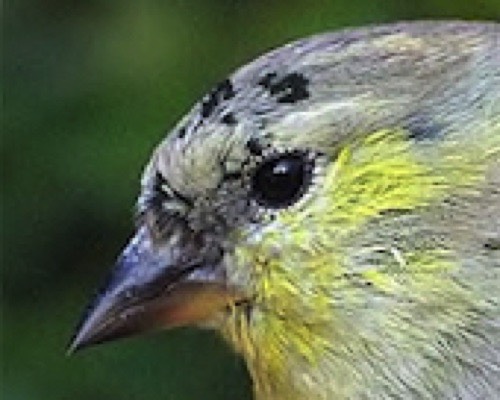
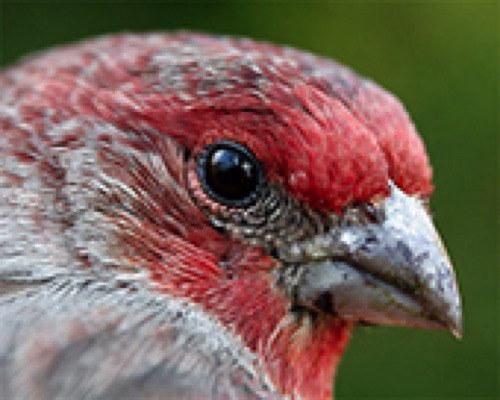
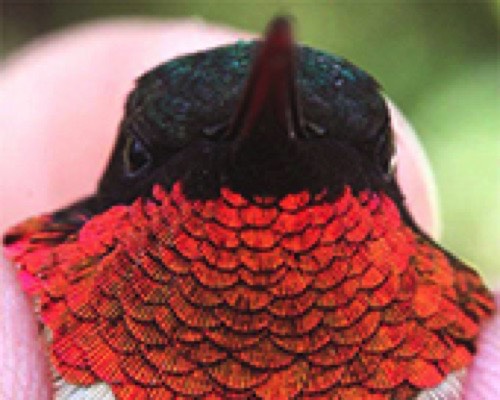
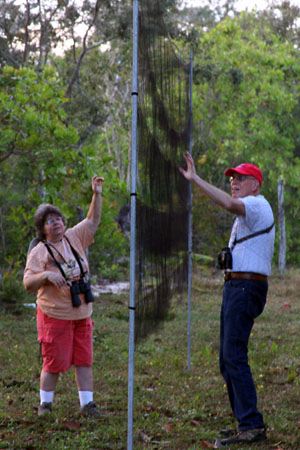 during much of the year didn't allow us to deploy mist nets
during much of the year didn't allow us to deploy mist nets 

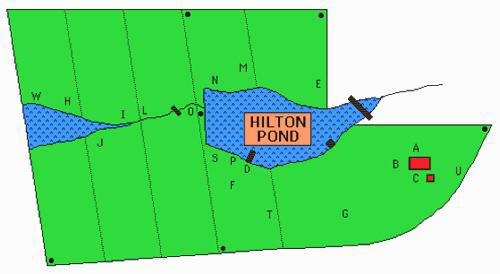
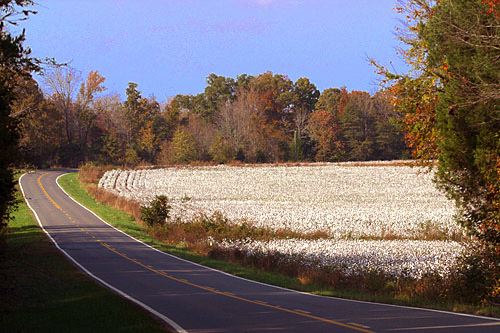
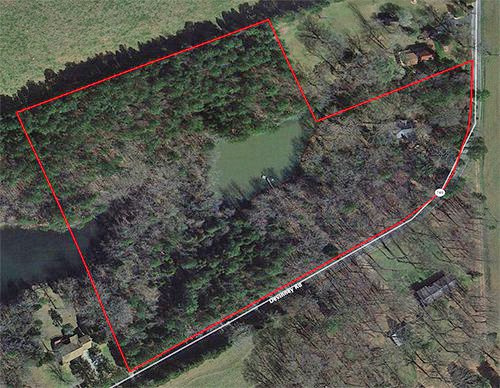
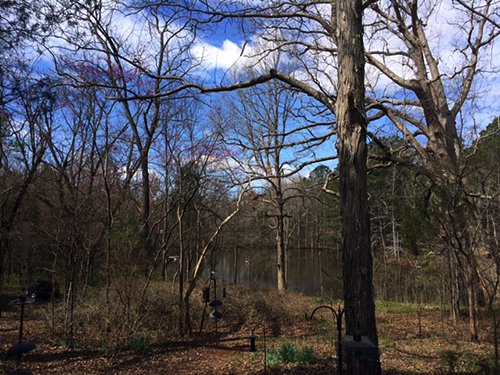
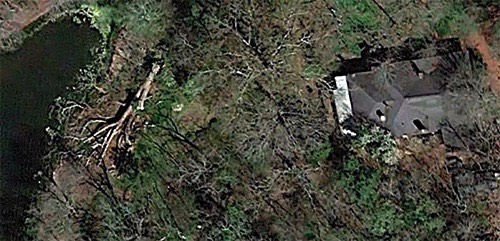
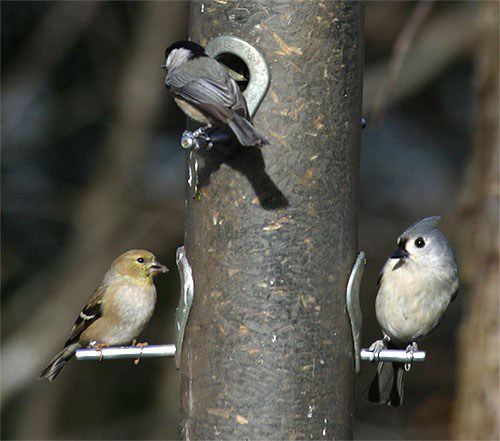
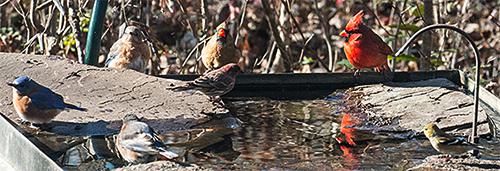
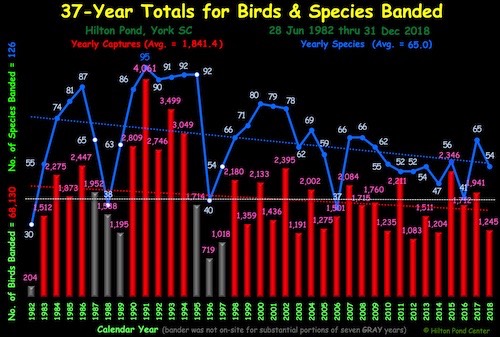
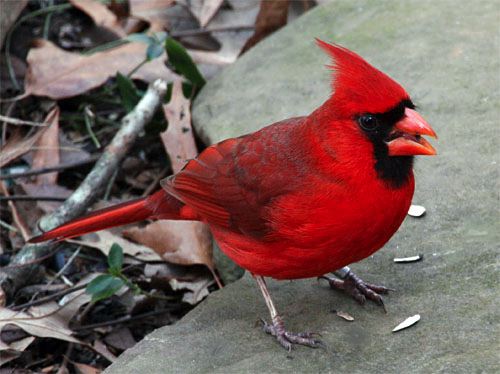
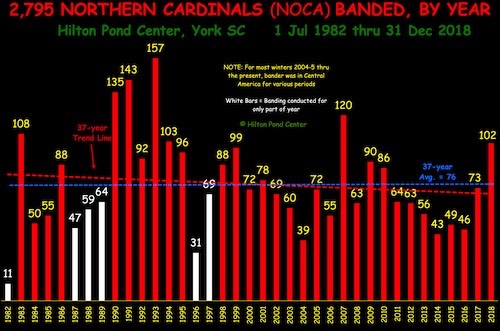
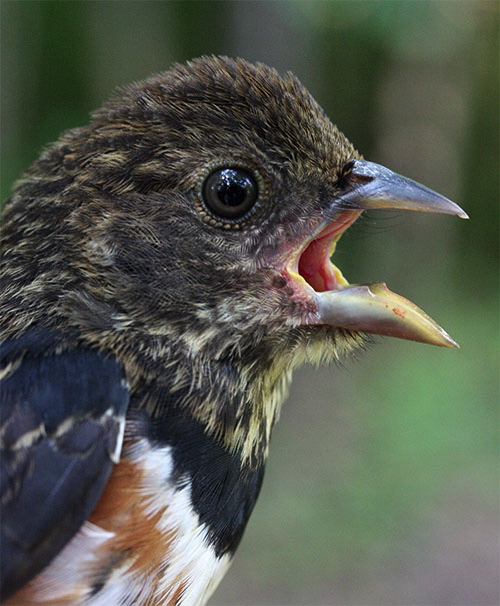



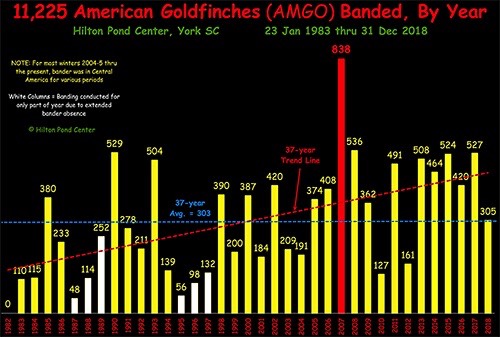
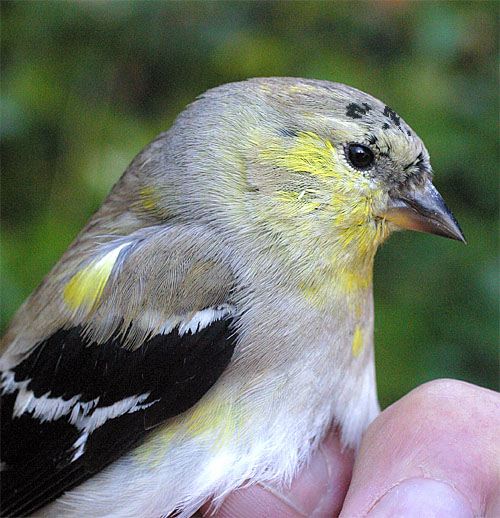
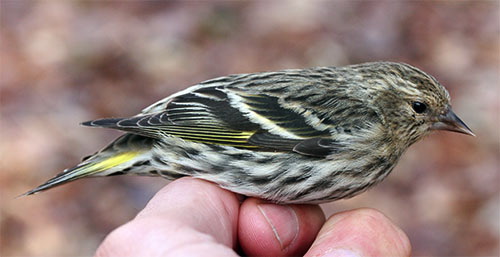


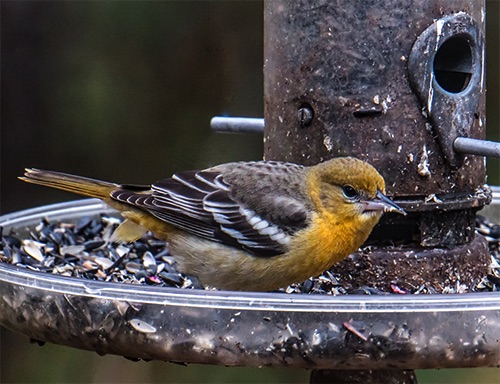
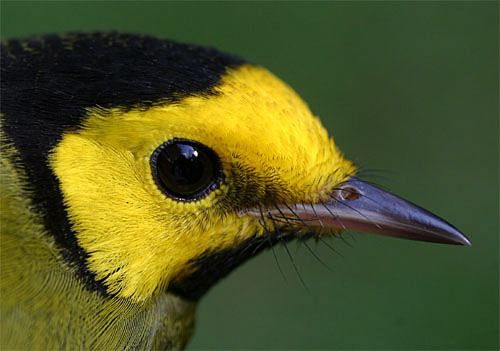



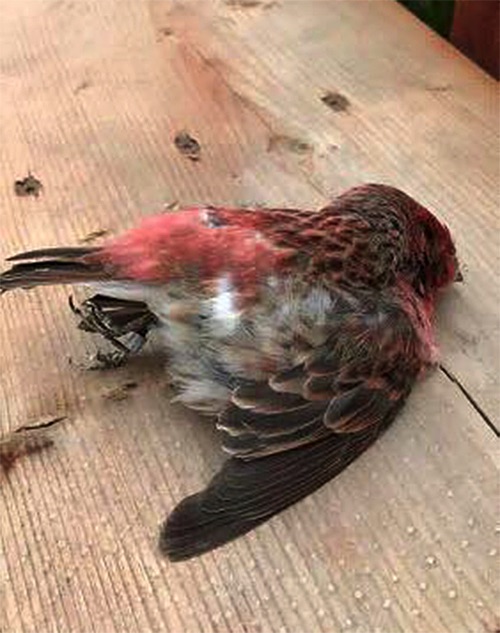

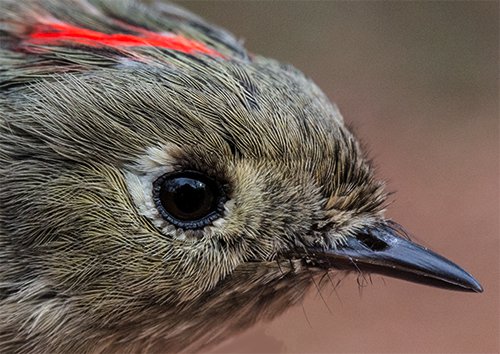


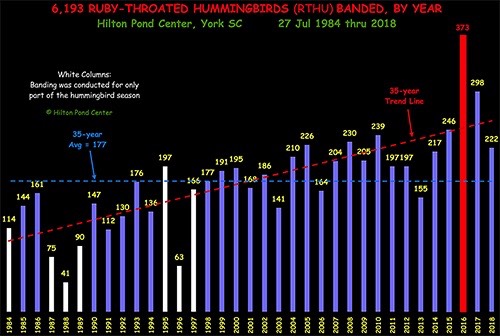
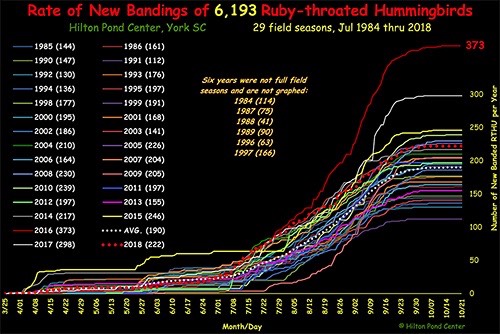

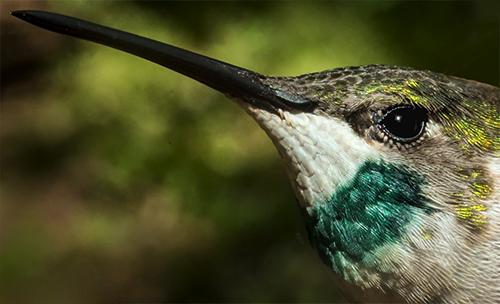

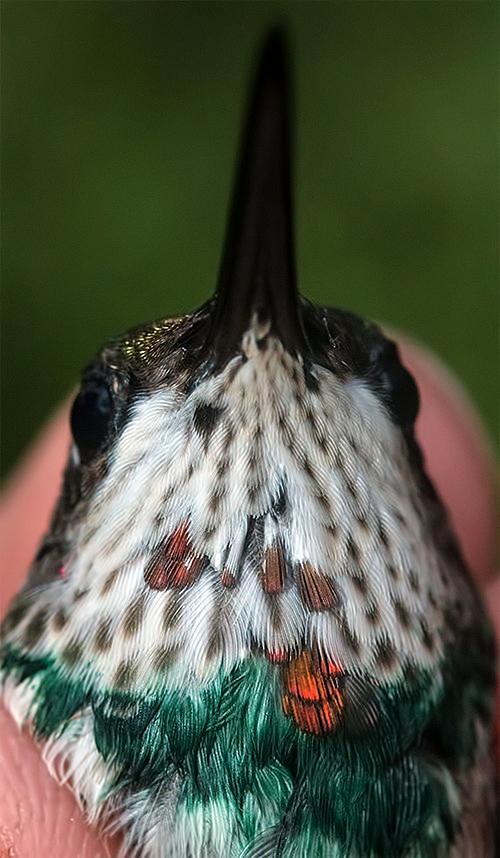
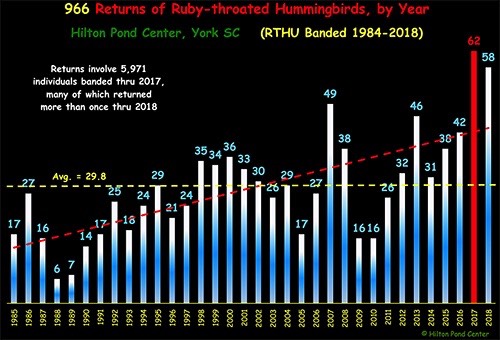
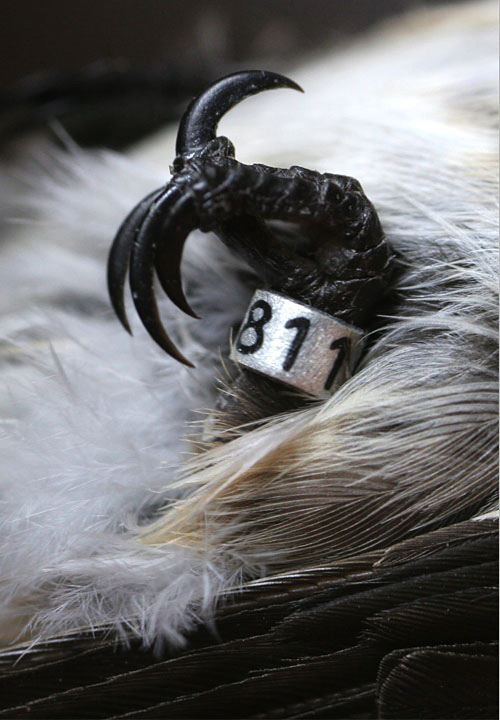
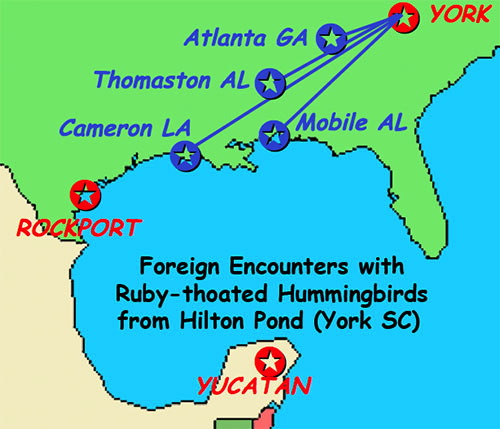
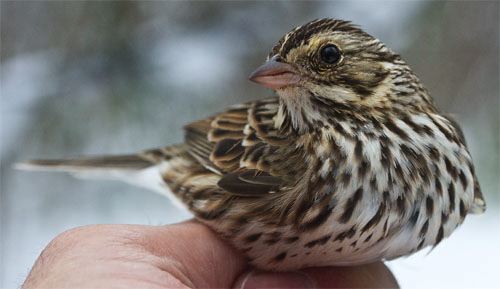
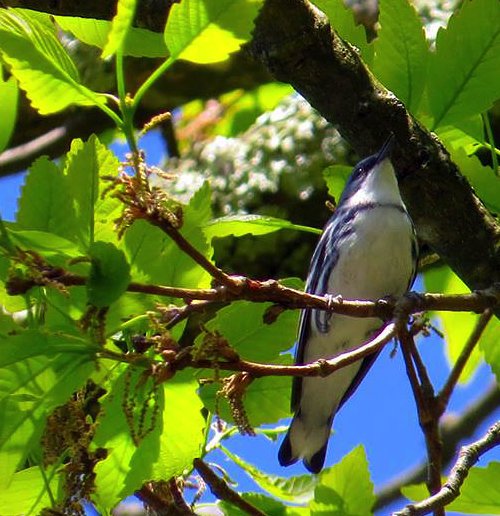

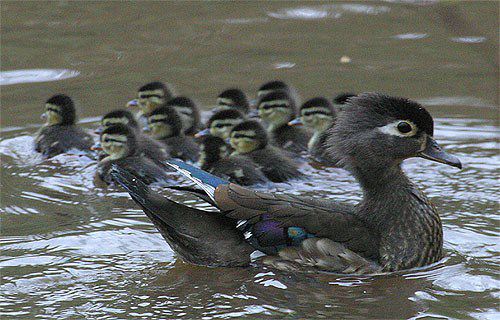
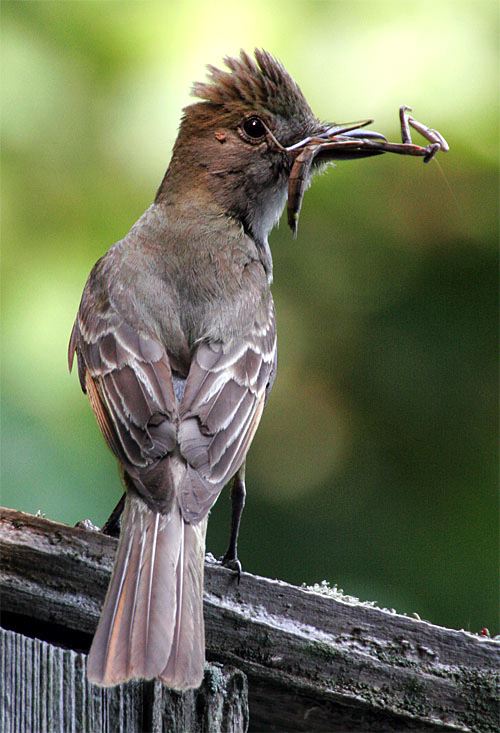



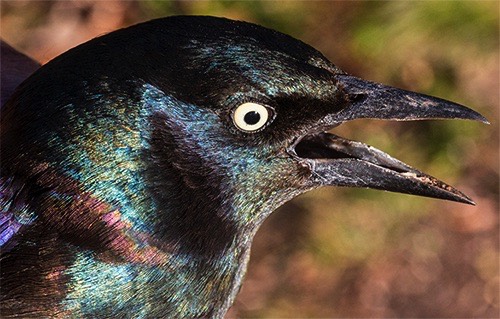










 Oct 15 to Mar 15:
Oct 15 to Mar 15: